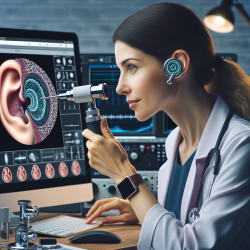As a practitioner working with children on the autism spectrum, you might often find yourself pondering the underlying neurobiological aspects that contribute to the behaviors and characteristics of autism spectrum disorder (ASD). A recent study titled Decreased grey matter volumes in unaffected mothers of individuals with autism spectrum disorder reflect the broader autism endophenotype offers fascinating insights that could help deepen your understanding and enhance your practice.
This research, conducted by Kyung-min An and colleagues, focuses on the broader autism phenotype (BAP) – a set of subclinical traits that are often present in the relatives of individuals with ASD. By examining the brain structures of 45 mothers of children with ASD (mASD) and comparing them with 46 matched controls, the study found significant differences in grey matter (GM) volumes in specific brain regions.
Key Findings
- Smaller GM volumes were observed in the right middle temporal gyrus (MTG), temporoparietal junction (TPJ), cerebellum, and parahippocampal gyrus in the mASD group compared to the control group.
- Smaller volumes in the MTG and TPJ were correlated with higher systemizing quotient (SQ) scores, which measure the drive to systemize.
- Smaller volumes in the cerebellum and parahippocampal gyrus were correlated with higher autism spectrum quotient (AQ) scores, which measure general autistic traits.
Implications for Practitioners
These findings suggest that atypical GM volumes in certain brain regions may represent one of the neurostructural endophenotypes of ASD. Here are some ways you can use this information to improve your practice:
1. Tailored Interventions
Understanding that parents of children with ASD may also exhibit subclinical traits can help you tailor your interventions. For instance, if a parent exhibits high systemizing traits, you might focus on interventions that enhance social communication and reduce rigidity in thinking patterns.
2. Holistic Family Approach
Incorporate a family-centered approach in your practice. By recognizing the broader autism phenotype in parents, you can offer support and resources that address the entire family's needs, not just the child with ASD.
3. Encourage Further Research
Stay informed about ongoing research in this area. Encourage colleagues and other practitioners to delve deeper into the neurobiological aspects of ASD. Understanding the broader autism phenotype can lead to more effective and comprehensive treatment plans.
Conclusion
The study by Kyung-min An and colleagues provides valuable insights into the neurostructural endophenotypes of ASD. By integrating these findings into your practice, you can better support children with ASD and their families, ultimately contributing to more positive outcomes.
To read the original research paper, please follow this link: Decreased grey matter volumes in unaffected mothers of individuals with autism spectrum disorder reflect the broader autism endophenotype.










